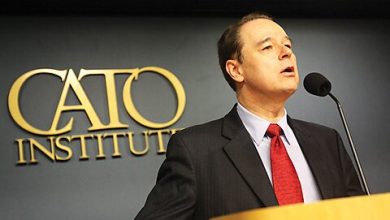Debt Threat Denial on Full Display in Fiscal Commission Hearing

The House Budget Committee held a hearing on October 19 titled “Sounding the Alarm: Examining the Need for a Fiscal Commission.” Among the witnesses was former House Budget Committee chair, John Yarmuth (D‑KY), who resigned from Congress in January of this year. In both his remarks and answers, Yarmuth put debt threat denial on full display while suggesting that Congress need not worry about rising borrowing costs because “we can print all the money we want.” Were Congress to follow Yarmuth’s advice, this would most likely lead to rapidly rising inflation and spell economic doom.
The hearing, co‐chaired by the HBC chair Jody Arrington (R‑TX) and ranking member Brendan Boyle (D‑PA), called upon four witnesses to discuss whether and how a fiscal commission might help put the US budget on a better fiscal path. Each witness was a former member of Congress and had been involved with a fiscal or budget process commission effort in the past. The witnesses were former Senator Rob Portman of Ohio, former Senator Kent Conrad of North Dakota, former Budget Chair Steve Womack of Arkansas, and former Budget Chair John Yarmuth of Kentucky.
Three of the four witnesses supported the idea of a fiscal commission to help Congress address the rapidly deteriorating fiscal situation. With total deficits projected to exceed $110 trillion over the next 30 years as the federal debt doubles to more than 200 percent of GDP, it’s necessary that Congress consider more effective options for reining in deficits and debt than the current, broken budget process. The only dissenting voice came from Yarmuth.
Beyond disagreeing with the need for a fiscal commission, Yarmuth questioned the unsustainability of the federal debt by espousing a widely debunked economic doctrine, without explicitly mentioning it by name: so‐called modern monetary theory (MMT). As economist Jeffrey Rogers Hummels has argued, “[MMT] is neither new nor modern. It simply justifies funding government expenditures by issuing fiat money, which, of course, all economists have long been aware is possible. MMT then attempts to downplay the potential inflationary impact of such financing with manipulations of the government and central‐bank balance sheets.” According to Yarmuth:
“Of course, every one of these efforts [to establish a fiscal commission] stems from the presumption that our debt and deficits are unsustainable. […] maybe this committee can actually analyze the national debt issue to determine whether the debt we have, and will have, is really unsustainable or not and how can we judge that moving forward? It can’t be just looking at a graph with a constantly rising line and getting scared. […] So that’s why I suggest before we start talking about the debt and deficit problems, we ought to try and get a really good look at what’s sustainable and what’s not. We are a sovereign currency, we can print all the money we want to serve the people whom we serve. … [W]hy are we paying interest on the money we borrow? And why do we borrow money anyway? We can print it and put it in the Treasury.”
Yarmuth’s advice to Congress amounts to, “Just have the Federal Reserve print more money. What could possibly go wrong?” Rapid inflation is what will go wrong.
The recent round of inflation, the highest in 40 years, followed a massive Fed‐fueled deficit‐spending spree during the COVID-19 pandemic. Inflation is fortunately falling (meaning prices are still rising, just more slowly), and the Covid‐19 experiment in MMT‐style policy should have dampened enthusiasm for MMT. Apparently, Yarmuth is undeterred.
The invocation of the magic words “sovereign currency” won’t insulate the United States from the inflationary effects of printing money to fund excessive government expenditures, any more than the sacrifice of animals in Ancient Rome protected that empire from natural catastrophes. With the 2023 deficit clocking in at a peace‐time, and non‐emergency‐period high of $2 trillion, as President Biden is asking Congress for more than $100 billion in emergency aid, the US federal government has no plans to stop massive deficit spending anytime soon.
Yarmuth isn’t the only legislator who has fallen for the alluring bait of modern monetary theory (it should be called “Magic Money Theory”). According to Peter Coy with the New York Times, quite a few Democrats have jumped on the MMT bandwagon:
Representative Alexandria Ocasio‐Cortez, Democrat of New York, has spoken positively about M.M.T., as have several of her fellow House progressives. Senator Brian Schatz, Democrat of Hawaii, has also expressed sympathy with Modern Monetary Theory and its cousin, the Green New Deal. The Times has reported that Kelton [author of the MMT bible: The Deficit Myth: Modern Monetary Theory and the Birth of the People’s Economy] has been a regular participant in conference calls on pandemic relief organized by Senate majority leader Charles Schumer, Democrat of New York.
Yarmuth says M.M.T.’s visibility in Congress is less than its influence. “There aren’t many people who are willing to be out front about it because it doesn’t resonate with what the average person thinks,” he said. He told The Louisville Courier‐Journal in August that many members of Congress are more open to deficit spending than you would guess from their anti‐deficit public statements: “Ultimately I think that’s for home base consumption and not necessarily for the vote at the end of the day.”
MMT is alluring because it promises to eliminate tradeoffs and constraints on government expenditures with the empty promise of creating unlimited dollars to finance such expenditures without the need to raise taxes or suffer rising interest costs. If politicians raise taxes too much, they’ll kill the golden goose that fills the Treasury’s coffers while taking a political risk. From politicians’ standpoint, it appears that much easier to finance government expansions with deficits. Deficits allow legislators to meet current constituent demands without imposing the associated costs on them. Yet, when excessive deficit spending on an already enormous federal debt pushes up interest rates, as we’re witnessing right now, using the Fed’s money‐issuance powers starts looking even more appealing. That’s where MMT comes in. Who doesn’t love a magical money theory that promises Congress that they can eat their cake and have it too?
Against this backdrop, and given congressional reluctance to reform entitlement programs that are the major drivers of increased spending and debt, it would be wise for Congress to empower a fiscal commission with real authority to stabilize the growth in debt and rein in exploding interest costs. Moreover, the Federal Reserve should close off an avenue for monetizing the debt via fiscal QE. The temptation to use the central bank balance sheet to fund federal government spending without having to resort to taxation or borrowing will only rise as the federal debt grows ever larger.
If Congress waits long enough to address the US fiscal crisis, the MMT crowd might just get their way. Governments throughout history have resorted to the printing press or other forms of currency devaluations to fund their expenditures with the same result again and again. We’ll all end up paying the price for higher inflation and implicit default on the federal debt should stable monetary policy give way to the temptations to apply the hidden tax of money devaluation. If the federal government doesn’t get the budget under control and instead embraces MMT to fund its operation, we’ll learn that lesson the hard way.





